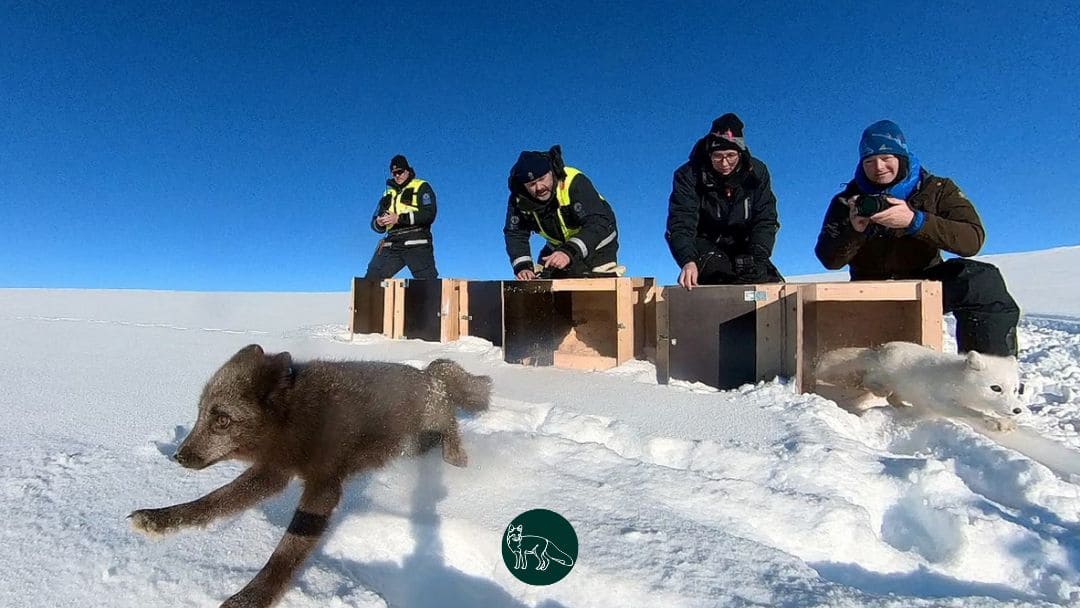Captive breeding programs in Norway have bolstered the numbers of arctic foxes endangered by the climate crisis and golden eagles, but long-term survival hinges on enhancing genetic diversity.
In the heart of Norway’s mountains, amidst the stark beauty of snow-covered expanses, Toralf Mjøen throws meat into a fenced enclosure, waiting for the familiar sight of a pair of dark eyes emerging from the snow. These arctic foxes, playful and inquisitive, are well-acquainted with Mjøen, who has been their caretaker for 17 years at a breeding facility near Oppdal, about 250 miles north of Oslo.
Mjøen’s connection to these animals dates back to his childhood on his father’s fox farm, where foxes were once bred for their fur. Today, with fur farms long shut down, the arctic fox symbolizes conservation efforts in Norway, yet their future remains uncertain. “Sometimes,” Mjøen reflects, “we can’t do anything but try.”
The journey to save the arctic fox from extinction is marked by incremental steps rather than dramatic actions. Since 2005, the Norwegian breeding program has been releasing captive-born foxes into the wild. By sheer numbers, the program is a success: the population has increased more than tenfold and has spread into Finland and Sweden.
However, the project’s leader, Craig Jackson of the Norwegian Institute for Nature Research (NINA), notes that the program’s success has brought new challenges. Initially focused on boosting numbers from about 50 to over 550 foxes across Scandinavia, with approximately 300 in Norway, the emphasis has now shifted to enhancing genetic diversity to ensure resilience against food shortages and climate change.
Despite meeting almost all critical reintroduction benchmarks, the foxes still rely on human intervention for survival, needing supplemental feeding and lacking genetic robustness. Rebuilding this diversity, lost during a population crash decades ago, is crucial for their long-term viability.
Jackson explains that the arctic foxes’ primary prey, lemmings, have become harder to find due to climate change and competition from invading red foxes. Though early culling efforts targeted red foxes to aid arctic fox recovery, competition remains fierce. A genetically diverse arctic fox population would better withstand these challenges.
Efforts are underway to introduce genetically distinct foxes into specific areas, but the fragmented habitat complicates these plans. Geneticist Øystein Flagstad emphasizes the need for comprehensive monitoring of both wild and released foxes to understand their genetic diversity and strategically release captive-bred foxes.
The program also contends with golden eagle predation, exacerbated by the concentration of foxes in enclosures. Despite creative deterrents like bamboo sticks and ropes, eagle attacks persist, resulting in significant financial losses. Jackson monitors the foxes from his office, but even timely interventions sometimes fall short against the eagles.
Funding from the Norwegian Environment Agency supports the program, aiming to improve the fox population’s status from endangered to vulnerable by 2034, with funding secured until 2026. Conservation biologist Tomas Holmern draws parallels to successful genetic diversity improvements in other species like the black-footed ferret and the California condor, both of which faced genetic bottlenecks.
Geneticist Klaus Koepfli from George Mason University’s Smithsonian School of Conservation notes that rebuilding genetic variation can take millennia, but advancements like gene editing offer hope for accelerating this process. Such tools could enhance genetic diversity across various species, potentially aiding arctic fox recovery.
Amidst these challenges, signs of hope emerge. Fresh tracks of a wild male fox circling the breeding station in April indicate potential for natural pairing, despite the recent loss of a female’s mate to an eagle. These tracks symbolize the ongoing fight for the survival and resilience of Norway’s arctic foxes .
This item was originally written by By Alexa Robles-Gil: The age of extinction is supported by theguardian.org


